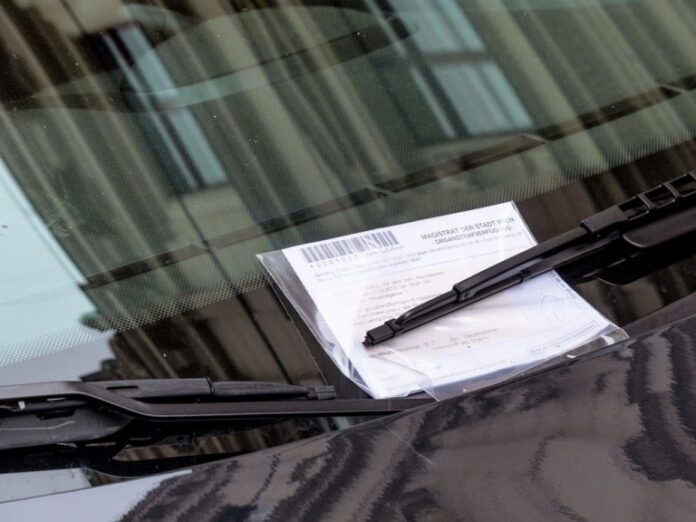Don’t panic if you’ve received a speeding ticket for California Vehicle Code 22349(a) VC. The first step is to understand the specifics of this violation. This section of the law prohibits driving over 65 miles per hour on a highway unless otherwise posted. Exceeding this speed limit can result in significant fines and penalties, so it’s important to address the ticket promptly.
Drivers have a few options when dealing with a speeding ticket. They can pay the fine, attend traffic school, or contest the ticket in court. It’s important to act quickly and choose the best course of action to avoid additional consequences. Seeking professional help can also be useful; experts can provide valuable advice and possibly even help dismiss the ticket.
Ignoring a speeding ticket is not advised, as it can lead to more severe penalties, including a suspended license. Researching and making informed decisions can save time, money, and stress. For those seeking professional assistance, it’s worth considering services that specialize in handling tickets for California Vehicle Code 22349(a) VC. They can help manage the process more efficiently.
Understanding California Vehicle Code 22349(a) VC
California Vehicle Code 22349(a) VC sets the speed limit at 65 miles per hour on highways unless otherwise specified. Violating this code can result in fines and points on your driving record.
Legal Definition and Limits
California Vehicle Code 22349(a) states that no person may drive a vehicle on a highway at a speed greater than 65 miles per hour. This law applies unless another speed limit is posted. For example, some rural freeways may have a higher limit of 70 miles per hour.
On two-lane, undivided highways, the default speed limit is 55 miles per hour unless a different limit is posted. This regulation ensures road safety by setting a standardized speed limit that drivers must follow unless signs indicate otherwise.
Consequences of a Speeding Violation
A violation of Vehicle Code 22349(a) can have several consequences. Primarily, it is considered an infraction, which typically results in a fine. The fines vary based on how much over the speed limit you were driving. For instance, speeding 1-15 MPH over the limit may cost you $238, while going 16-25 MPH over can result in a $367 fine.
Besides the monetary penalty, violating this code can add points to your driving record. Accumulating too many points can lead to license suspension and increased insurance premiums. It is important to know these consequences when considering how to handle a ticket for speeding over 65 miles per hour.
Responding to a Speeding Ticket
After getting a speeding ticket for violating California Vehicle Code 22349(a), which prohibits driving over 65 mph, it’s important to carefully consider your next steps. If the ticket is for speeding over 100 MPH (CVC 22348), the penalties are even more severe, and the decision to pay the fine, contest it in court, or attend traffic school should be weighed carefully.
Reviewing the Ticket and Violation Details
Start by thoroughly examining the information on your ticket. Check the date, time, and location of the violation. Verify your speed as recorded by the officer. Ensure that the radar or laser device used was properly functioning and that the readings are accurate.
Mistakes on the ticket, such as incorrect details or clerical errors, could be grounds to contest the ticket.
Option to Pay the Fine
Paying the fine is the simplest route but not always the best. The fine for speeding 1-15 mph over the limit is around $238. For speeding 16-25 mph over, the fine increases to about $367.
Paying the fine means accepting the penalty, which can include points on your driving record and possible increases in insurance premiums.
Contesting the Ticket in Court
Another option is to fight the ticket in court. This involves appearing before a judge and presenting your case. Evidence such as witness statements, photographs of the area, or calibration records of the speed detection device may help.
Hiring a lawyer can be beneficial if you’re unfamiliar with court procedures or need expert assistance.
Attending Traffic School
Attending traffic school is often a good option for eligible drivers. It helps in masking the points from your driving record. This can prevent insurance premiums from rising.
Check if you’re eligible by contacting the traffic court. Usually, you can attend traffic school if you haven’t done so in the past 18 months.
These steps can help address the consequences of a speeding ticket and potentially reduce its impact on your driving record and insurance rates.
Conclusion
Receiving a speeding ticket for California Vehicle Code 22349(a) can have serious consequences. It’s important to consider your options, whether paying the fine, attending traffic school, or fighting the ticket in court. Understanding the specific charges and potential penalties will help you make the best decision for your situation. Always consult with a legal expert if you need further guidance.
